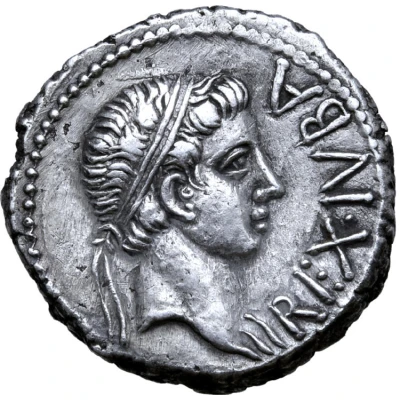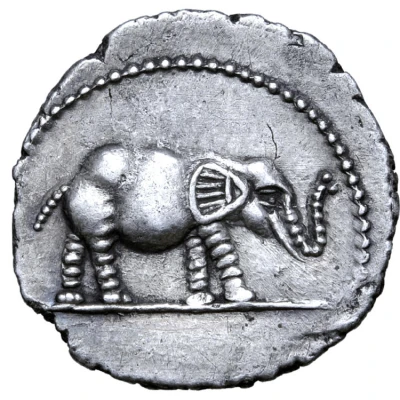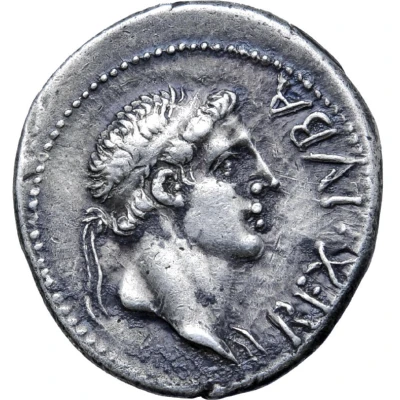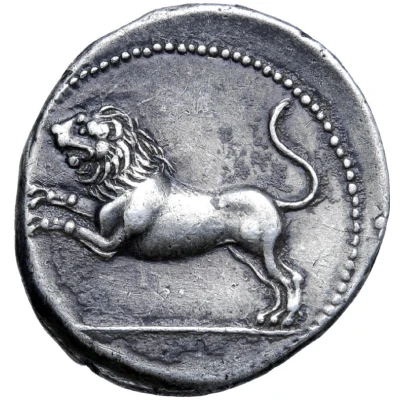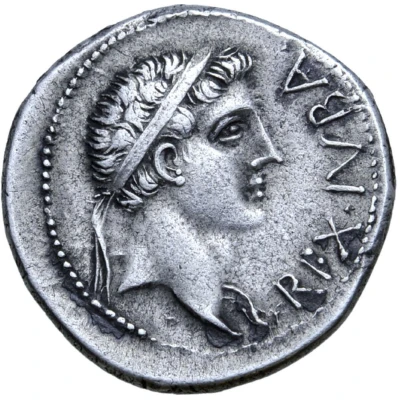
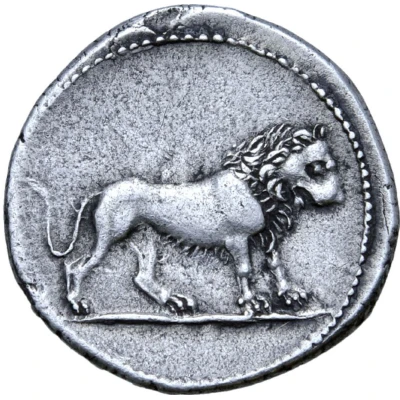

© Roma Numismatics Limited
Denarius - Juba II Caesarea 25 BC - 24 AD
| Silver | 3.09 g | 19 mm |
| Issuer | Mauretania |
|---|---|
| King | Juba II (25 BC - 23 AD) |
| Type | Standard circulation coin |
| Years | 25 BC - 24 AD |
| Value | 1 Denarius |
| Currency | Denarius (25BC-40AD) |
| Composition | Silver |
| Weight | 3.09 g |
| Diameter | 19 mm |
| Shape | Round (irregular) |
| Technique | Hammered |
| Orientation | Variable alignment ↺ |
| Demonetized | Yes |
| Updated | 2024-10-10 |
| Numista | N#379504 |
|---|---|
| Rarity index | 100% |
Reverse
Lion standing right on ground line.
Comment
The Banasa Hoard, deposited in circa AD 18-17 was found in 1907 near modern day Souk-el Arbaa, 120 km northeast of Rabat, Morocco, in 1907. The hoard was previously said to be from Alkazar (El Ksar El Kebir), 70 km south of Tangier and hence is occasionally referred to as the El Ksar Hoard. The group contained approximately 4000 silver coins and one bronze. A substantial number of the coins now reside in public collections, principally in London, Paris, Berlin, Athens, New York and Algiers.Interesting fact
The Denarius - Juba II (Caesarea) coin from Mauretania, which was minted during the reign of Juba II (25 BC - 24 AD), features an image of the king on the obverse side and a representation of the Roman goddess Venus on the reverse side. This coin was made of silver and weighed 3.09 grams. What's interesting about this coin is that it showcases the blending of Roman and Mauretanian cultures, as Juba II was a Roman client king who ruled over Mauretania, a region in North Africa. The coin's design reflects this cultural fusion, with the depiction of a Roman deity on one side and a local king on the other.
